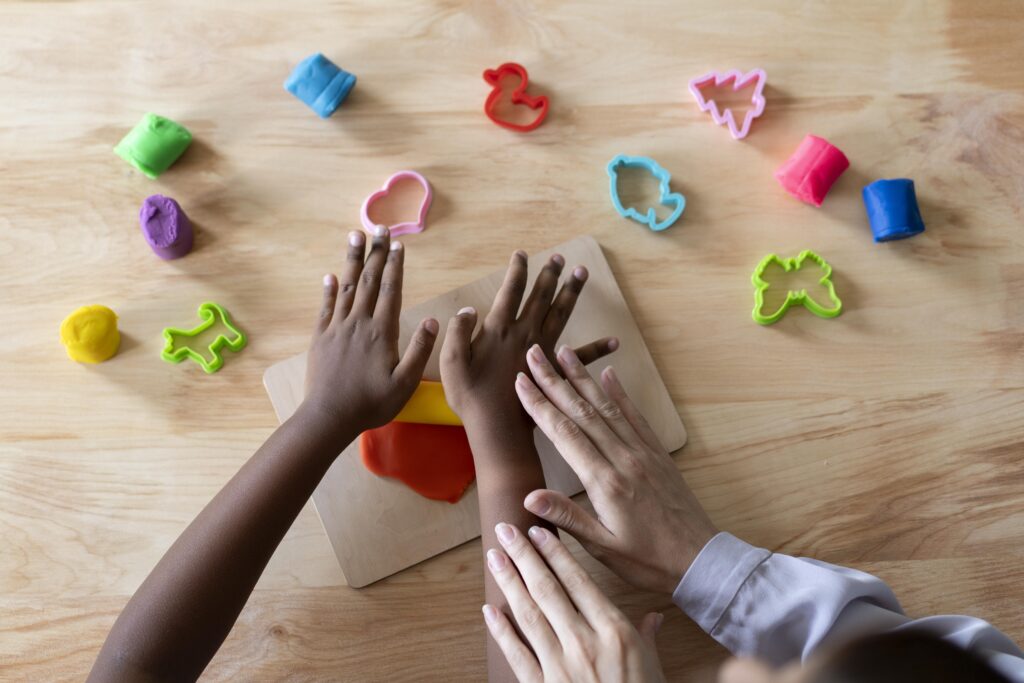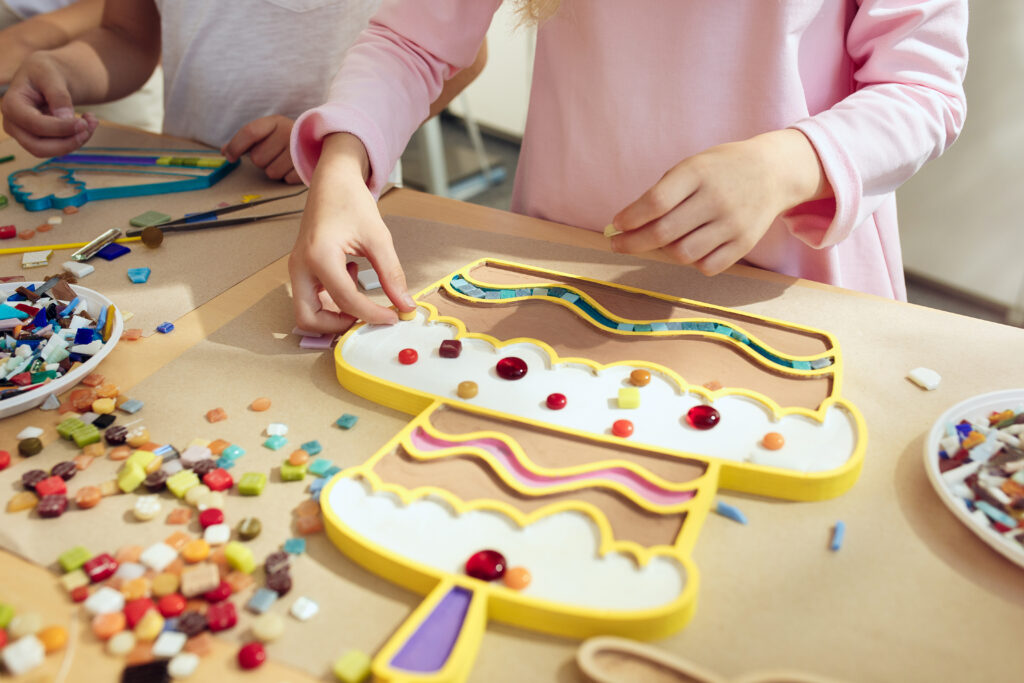Learning and creativity are fundamental skills for the cognitive, emotional, and social development of children. These abilities allow children to explore the world, express their feelings, solve problems, interact with others, and build knowledge. However, how can we stimulate these skills in a fun and effective way?
One of the best methods is through play and playful activities. Playfulness is an essential aspect of human life, associated with pleasure, fun, fantasy, and imagination. In other words, playful activities are ways to express this playfulness, involving active participation, curiosity, experimentation, cooperation, and creativity.
The Importance of Play in Child Development

Play is not just a way to pass the time; it is a crucial tool for learning and development. Through play, children develop essential skills such as problem-solving, critical thinking, and emotional regulation. Moreover, play helps children build social skills, including communication, negotiation, empathy, and respect. It also fosters physical development by improving motor skills and coordination.
Classification of Playful Activities to Stimulate Learning and Creativity
Playful activities can be classified into different types based on their structure, purpose, context, and resources involved. Below are some examples:
1. Free Play
Free play refers to activities where children choose what, how, where, and with whom to play, without predefined rules or guidance. This type of play encourages autonomy, initiative, imagination, and self-expression. It also promotes social skills such as communication, negotiation, empathy, and respect. Free play allows children to explore their interests and develop their creativity in a natural and unstructured way.
2. Guided Play
Guided play involves activities where an adult or a more experienced child provides a proposal, guidance, or rules to direct the play. This type of play helps children learn concepts, skills, and values while developing attention, memory, logic, language, and motor coordination. Guided play strikes a balance between structure and freedom, allowing children to explore within a framework that supports their learning.
3. Educational Play
Educational play has an explicit pedagogical objective, often related to a specific content or area of knowledge. These activities can be used to introduce, review, or deepen a topic in a fun and meaningful way. Educational play can include games, puzzles, experiments, dramatizations, stories, music, and drawing. By integrating learning with play, children are more likely to retain information and develop a positive attitude toward learning.
4. Creative Play
Creative play stimulates children’s creativity, which is the ability to create something new, original, and useful from known or unknown elements. This type of play can involve inventing, transforming, combining, adapting, or expanding objects, ideas, situations, characters, or stories. Creative play can be individual or collective and often uses materials such as paper, pencils, scissors, glue, modeling clay, or recycled items. It encourages children to think outside the box and develop innovative solutions to problems.
Key Aspects to Consider When Stimulating Learning and Creativity
To effectively stimulate learning and creativity through play, it is important to consider the following aspects:
1. Children’s Interests and Motivation
Playful activities should align with what children enjoy, want, and need to learn. Respecting their preferences, needs, and pace is crucial for maintaining their motivation and engagement. When children are interested in an activity, they are more likely to immerse themselves fully and derive maximum benefit from it.
2. Diversity and Appropriateness of Activities
The activities should be varied and appropriate for the children’s age, developmental level, context, and objectives. Offering a range of challenges, stimuli, and opportunities for learning and creativity ensures that children remain engaged and continue to grow. It is important to strike a balance between activities that are familiar and those that push children out of their comfort zones.
3. Active Participation and Social Interaction
Encouraging active participation and social interaction among children is essential. Respecting their individuality, opinions, and feelings while promoting cooperation, dialogue, and mutual respect helps create a positive and inclusive environment. Group activities, in particular, can teach children valuable lessons about teamwork and empathy.
4. Adult Mediation and Support
Adults play a crucial role in mediating and supporting children’s play. They should offer guidance, feedback, and recognition without interfering with the children’s autonomy, initiative, and creativity. Adults can also use playful situations to expand children’s knowledge, skills, and values. By observing and engaging with children during play, adults can identify areas where additional support or challenge may be needed.
Practical Tips for Parents and Educators
Here are some practical tips for parents and educators who want to stimulate children’s learning and creativity through play:
Create a Play-Friendly Environment: Ensure that children have access to a variety of materials and spaces that encourage play. This could include art supplies, building blocks, books, and outdoor play areas.
Encourage Exploration and Experimentation: Allow children to explore and experiment with different materials and ideas. Avoid being overly directive; instead, let children take the lead and discover things on their own.
Incorporate Learning into Everyday Activities: Use everyday situations as opportunities for learning. For example, cooking together can teach math and science concepts, while a walk in the park can be a chance to learn about nature.
Celebrate Creativity: Praise and celebrate children’s creative efforts, no matter how small. This helps build their confidence and encourages them to continue exploring their creativity.
Limit Screen Time: While technology can be a valuable tool, it is important to limit screen time and encourage hands-on, imaginative play. Excessive screen time can hinder creativity and social interaction.
Be a Role Model: Show children that learning and creativity are lifelong pursuits by engaging in creative activities yourself. Whether it’s painting, writing, or solving puzzles, let children see you enjoying and valuing these activities.
The Long-Term Benefits of Playful Learning
Stimulating learning and creativity through play has long-term benefits for children. It helps them develop a love for learning, enhances their problem-solving abilities, and fosters resilience and adaptability. Creative individuals are often better equipped to navigate the complexities of the modern world, as they can think critically, innovate, and collaborate effectively.
Moreover, playful learning contributes to emotional well-being. Children who engage in regular play are more likely to develop a positive self-image and strong social connections. They learn to manage stress, express their emotions, and build healthy relationships.
Conclusion
In conclusion, playful activities are effective and enjoyable ways to stimulate children’s learning and creativity. By incorporating free play, guided play, educational play, and creative play into their daily routines, parents and educators can support children’s holistic development. These activities not only enhance cognitive and social skills but also contribute to the formation of critical, creative, and participatory citizens. By respecting children’s interests, providing diverse and appropriate activities, encouraging active participation, and offering supportive mediation, we can create an environment where children thrive and reach their full potential.
Remember, the goal is not just to teach children but to inspire them to become lifelong learners and innovators. Through play, we can unlock their potential and prepare them for a bright and successful future.




